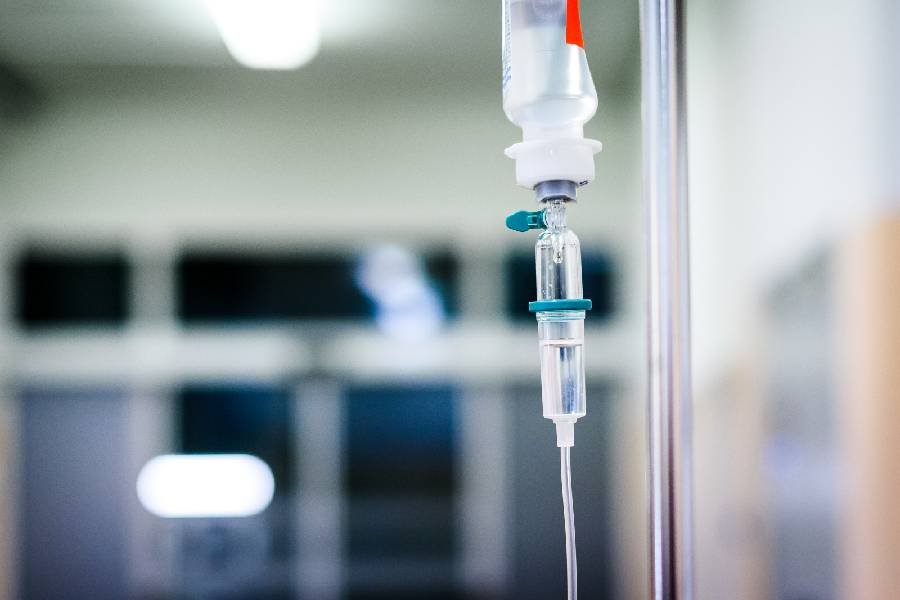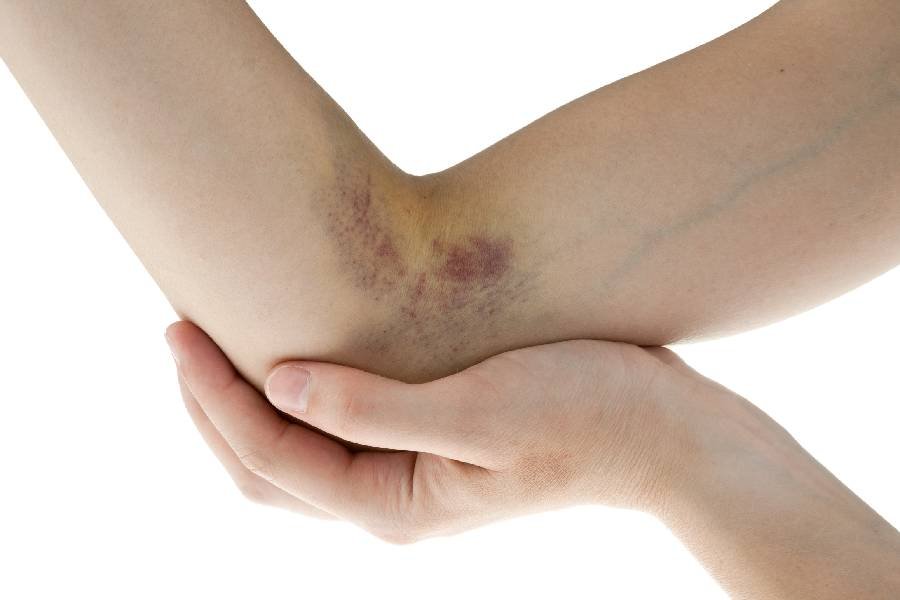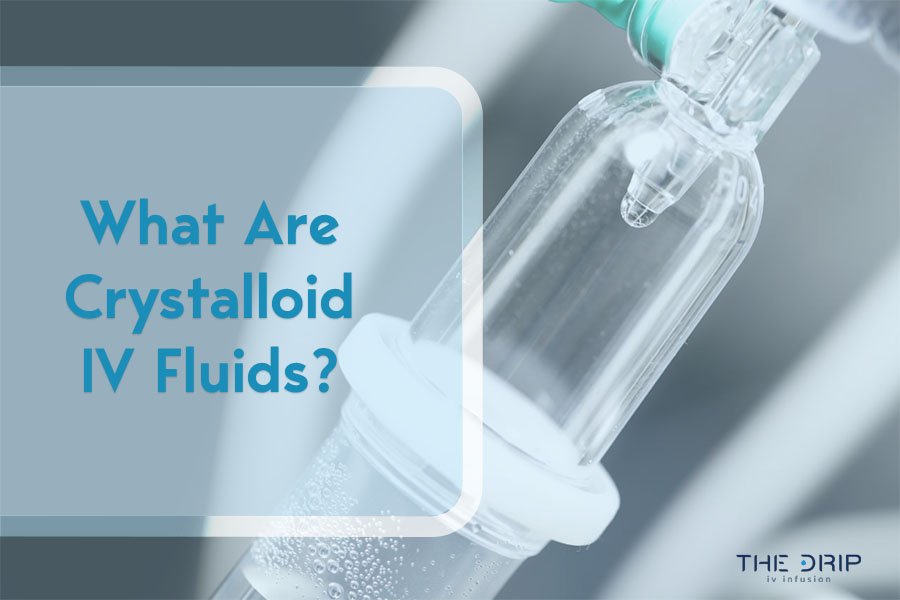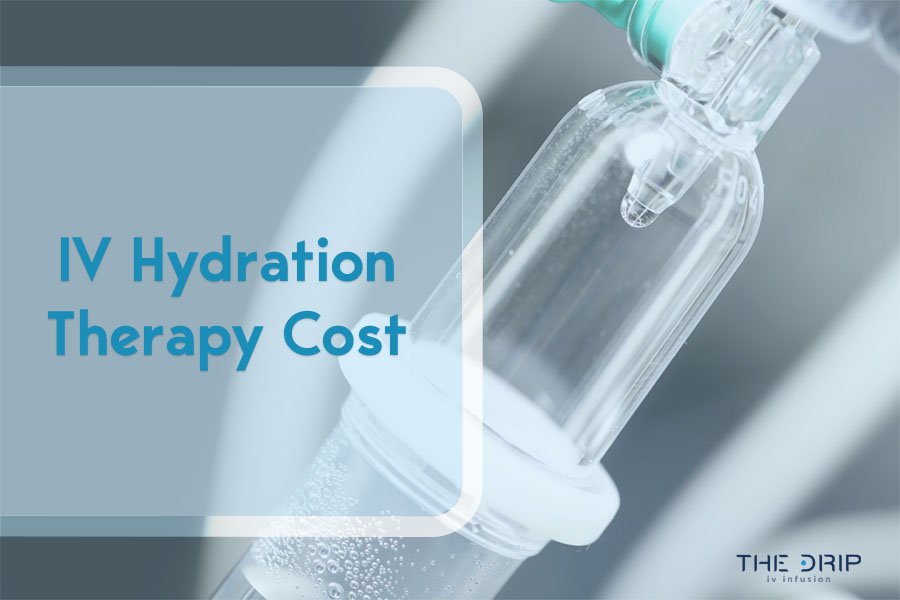With the rapid advancements in technology, there are many treatment opportunities available. In today’s age, more people than ever are willing to try IV fluids for many medical conditions. So what is IV drip therapy, and how can you benefit from it?
To better understand this renowned treatment and its uses, you have to know the elements that play an important role in the process. That’s why this article will focus on explaining the essential definitions, ingredients, and processes surrounding IV therapy. And after gathering all the needed information, you can decide for yourself if it suits you or not.
Continue reading to discover everything you should know before trying IV drip therapy and how you can use it to your advantage!
What Is IV Drip Therapy?
So what is IV drip treatment? The first thing you should know is that IV therapy is short for “intravenous therapy”. This means that the necessary treatment includes applying a specific type of medication through your veins. Since it comes in the form of fluids, it’s injected directly into the bloodstream. Thus, it’s used to hydrate the patient in a quick and efficient way.
A simple IV drip definition is that it’s a medical technique used to administer fluids, nutrients, and medications through a patient’s veins. However, to further understand its use and benefits, you first need to understand how this practice came to be. Even though it’s a fairly new treatment, it dates far back into the past.
The history of IV drip therapy
The first attempt at an IV therapy injection can be traced back to the Middle Ages. Even though there are contradictory arguments, the first-ever patient to receive this treatment is thought to be none other than Pope Innocent VIII. During these trials in 1492, the sick patient was injected with the blood of other healthy individuals. However, due to poor hygiene practices, it’s said that the donor didn’t survive the experiment and that the pope wasn’t healed.
Even though there was various research done on humans and animals, the first real breakthrough was in 1667. It all started when Richard Lower proved that blood could be transfused between two animals. That’s when he started working with Edmund King in an attempt to use sheep blood to cure a mentally ill man. Even though they carried out the experiment, many medical controversies arose, and the treatment was banned in France.
The next successful advancement was recorded in 1831. During this period, Thomas Aitchison Latta began to research the use of IV fluids for treating cholera. What first began as a saline-like solution quickly turned to experimenting with additional ingredients. Thus, people began adding egg yolks, sugar, honey, and other liquids.

Source: shutterstock.com / Photo Contributor: Andrey_Popov
IV tubing in modern times
IV drip therapy started being widely used around the 1950s. However, it wasn’t until the 1960s that scientists began considering this treatment to provide the patient with his full nutrition needs.
During this time, Dr. John Myers first injected an IV cocktail made of vitamins and minerals. Thus, the renowned “Myers’ Cocktail” gained popularity for its intravenous vitamin therapy use. This formula is made from sterile water mixed with high doses of vitamin B, vitamin C, and minerals.
Furthermore, in today’s practices, it’s used to treat various medical conditions. Some of them are cardiovascular disorders, respiratory tract infections, asthma, and fibromyalgia.
What started as experiments with blood transfusion quickly turned into an everyday treatment. In today’s age, IV therapy is used both for treating and preventing health hazards.
Types of IV Therapy
In modern medicine, there are two main types of IV therapy used. These are known as IV drip and IV push treatments. Even though they share the same goal, the main difference is in the way they’re administered. The treatment duration and amount of fluids differ as well.
Regardless of your choice, both types of IV therapy should be performed by a professional medical team. Each has its own risks and complications, so having a trained medical professional by your side is a must.
IV push
An IV push therapy, also known as “direct IV”, is used to administer the needed medication through a syringe injection. This is done through a previously inserted catheter in the patient’s vein. It’s mostly used in critical situations when a person needs immediate intervention.
The whole process doesn’t take more than 15 minutes to be applied. Thus, it’s the quickest way to insert the needed nutrients or medications in the patient.
As for the amount of fluids injected, the number is limited only to 30-60 milliliters. So even though an IV push therapy is done faster, it isn’t as rich in nutrients.
Lastly, the IV tubing with this method stays only for a short time in the vein. This drastically lowers the chances of an infection and makes it a safer option.
IV drip
An IV drip therapy, on the other hand, is a slower process that involves more fluids. During the treatment, a drip bag is inserted through an IV tubing system. Using the force of gravity, the IV fluids enter the patient’s bloodstream drop by drop.
Unlike the IV push method, the duration of this treatment can last between 45 and 60 minutes. However, a lot more fluids go into the patient. The average amount per session is around 250 to 1,000 milliliters, based on the person’s needs.
During the treatment, patients can enjoy some leisure activities, get some easy work done, or simply relax.

Source: shutterstock.com / Photo Contributor: JGA
What Is an IV Drip Used For?
After trials and errors in the past, the IV drip has many uses in today’s age. The primary use is to hydrate the body and provide it with essential nutrients. However, many people use it as an alternative treatment for various conditions. Some of the uses for IV drip therapy are:
Fast rehydration and nutrition
Immune booster
Athletic recovery
Inflammation
Cold and flu recovery
Hangover relief
Morning sickness relief
Fast rehydration and nutrition
As mentioned, the primary use of IV therapy is to provide the patient with essential nutrients and hydrate their body. It’s mostly used for people who are unable to take food orally and digest it. Thus, they’re given an IV cocktail with salts, vitamins, amino acids, and dextrose.
Since it’s applied with an injection directly into the bloodstream, it may offer quick relief and rehydration. When a patient is rapidly losing fluids, an IV drip might help balance their levels. That’s why this treatment is used for children who have experienced prolonged vomiting and diarrhea.
As for adults, IV drip therapy has a broader spectrum of use. It’s especially useful when dehydration occurs due to drug intoxication, postural tachycardia syndrome, and cancer.
Immune booster
Many people use IV fluids as an immune booster. As you already know, this type of therapy contains many important nutrients, such as vitamins and minerals. These substances directly affect the immune system and may boost it. However, since most of them aren’t produced naturally in the body, they have to be obtained from an outside source.
Remember that there are natural ways to keep your nutrition levels balanced. So leading a healthy lifestyle with regular exercise, a healthy diet, and a solid sleep routine is essential. Yet, these levels may unexpectedly drop due to an illness or medical condition. When that happens, the patient might experience further complications caused by the nutrition deficit.
If that’s the case, an IV drip therapy may be the best solution for the problem. Many IV cocktails are rich in vitamin B, vitamin C, vitamin D, zinc, and folic acid. By skipping the digestive system and avoiding the process of breaking down these nutrients, IV therapy might act as a fast immune booster on a cellular level.
Not only may this help you fight infections, but it might also reduce your fatigue. Plus, having a strong immune system is beneficial for your overall health and wellness.
Athletic recovery
Another use of IV fluids is to achieve a fast, athletic recovery. While it’s important for everyone to get regular exercise, athletes often push their bodies beyond their limits. Thus, they’re more prone to dehydration and muscle cramps. Not only are these conditions painful, but they also affect athletic performance.
Even though further research is needed, IV therapy might be beneficial to keep professional athletes hydrated. But be aware that this treatment is prohibited by the World Anti-Doping Agency–governed competitions. This is because many athletes have misused it when it comes to anti-doping tests. Since IV drip therapy is fast and effective, it might be used to clear any drug in the system before undergoing such testing.

Source: shutterstock.com / Photo Contibutor: baranq
Inflammation
The next use of IV therapy is for battling inflammation. Since IV fluids contain nutrients that have anti-inflammatory properties, they might be used to treat such conditions. A study shows that high doses of vitamin C may reduce inflammation even in cancer patients.
The second ingredient that plays an important role in this process is glutathione. This antioxidant is found in many fungi, plants, and animals. When used as an extract in IV drip therapy, it might reduce inflammation.
Cold and flu recovery
Going hands-in-hands with immune boosting and anti-inflammatory properties, an IV drip may lead to a quick cold and flu recovery. IV cocktails designed for this purpose also contain electrolytes and antiemetics. Some of the most common anti-flu medications found in IV therapy are L-carnitine, Pepcid, Zofran, Toradol, and Benadryl.
While Pepcid is used to decrease levels of stomach acid, Zofran is used to treat prolonged vomiting and nausea. As for anti-inflammation, Toradol is a renowned medication used to treat pain.
If you’ve been struggling with a nasty cold, one of the best medications that may help you is Benadryl. Designed to battle the common cold, this drug may treat a runny nose and fevers.
Lastly, L-carnitine is essential for replenishing your energy when dealing with cold and flu. Its main use is to turn your body fat into energy.
Hangover relief
An IV drip therapy may also be used as a hangover relief after a night of heavy drinking. However, remember that further research is needed and that it isn’t a cure for this condition. But it might lessen some of the symptoms that come with it.
Alcohol causes a disbalance in the electrolytes and might lead to dehydration. Thus, the aftermath is felt after its levels have depleted. You may even experience flu-like symptoms alongside the throbbing headache and nausea. The biggest reasons behind this are dehydration, inflammation, gastrointestinal irritation, and low blood sugar.
When receiving IV therapy for a hangover, several main ingredients are included. Some of these ingredients are vitamins C and B, zinc, glutathione, magnesium, Pepcid, Zofran, and Toradol.
With their help, you may easily deal with the symptoms of nausea, fatigue, dehydration, and irritability. This is mostly due to the ingredients’ anti-inflammatory, antioxidant, and nutritious properties.

Source: shutterstock.com / Photo Contributor: Shchus
Morning sickness relief
Lastly, IV fluids may also relieve morning sickness symptoms. Even though morning sickness is a natural part of pregnancy, it can also be dangerous. If the mother and baby are exposed to prolonged vomiting, it may lead to a nutrient deficit and malnourishment.
Several studies suggest that IV drip therapy may be most beneficial for stopping morning sickness and nausea. Additionally, it might keep both the mother and baby hydrated while also giving them the proper nutrition.
The IV Drip Therapy Process
After learning what is IV infusion therapy and what it’s used for, you should also be aware of the process itself. Even though the treatment time is long, setting up the IV drip is a quick procedure. The simple steps are:
Finding the right vein
Sterilizing the area
Applying the cannula
Receiving the treatment
Removing the IV tubing
Finalizing details
Finding the right vein
The first step medical professionals take when applying an IV drip therapy is finding a suitable vein. For this type of treatment, the most suitable places are the inner forearm, back of the hand, or inner wrist. But if the medical professionals have a hard time finding a suitable vein, IV fluids can also be applied through the top of the foot.
In impossible cases, many medical professionals might also use ultrasound scans. With this equipment, they can easily guide the needle and find a suitable spot.
Sterilizing the area
The next important step is to sanitize the area where the needle will go into. Always ensure the sterilization is done properly to avoid the risk of infection and complications. Even though IV therapy may work wonders for your overall health, you should always take the necessary precautions. Thus, the most common disinfectants used are:
Chlorhexidine gluconate
Iodophors
Alcohol
Antiseptic combinations
Applying the cannula
Applying the cannula is the scariest part of the process for most people. During it, the medical professional will have to place the needle in the vein. But you shouldn’t be worried. You’ll only feel a little sting as the needle punctures the skin.
After the needle and cannula have been inserted, the medical professional will apply a strip of medical adhesive tape to hold them firmly. Once it’s set, the rest of the IV tubing is connected to the IV drip bag.
Receiving the treatment
As mentioned above, IV drip therapy can last between 45 minutes to an hour, based on patient needs. During this time, a medical professional will check you regularly and closely monitor the cannula. This is to ensure that the IV drip is running correctly and that there aren’t any complications.
What you’ll do during the time it takes for the drip bag to empty is up to you. Some people find it more comforting to just lay back and watch their favorite TV show or read a book. Others tend to keep their mind occupied and focus on their work. However, this highly depends if you’re getting the treatment at a hospital or in a home setting.

Source: shutterstock.com / Photo Contributor: Studio Romantic
Removing the IV tubing
After the IV drip bag has emptied, the medical professional will start taking the IV tubing out. They’ll first start by disconnecting the cannula from the tube. Then, they’ll gently take the cannula out without causing you much discomfort.
Finalizing details
Once all the equipment is removed, the medical professionals will apply pressure to the area where the cannula was inserted. Doing so will stop and prevent any bleeding and bruising. As a final detail, you get a sterilized cotton ball held in place by medical adhesive tape that you can take off after an hour or two.
The Benefits of IV Therapy
Even though this renowned medical treatment is far spread, many people are still unsure of their efficiency. So the next question you might ask yourself is, are IV drips worth it? If you’re still contemplating trying an IV drip therapy, here are some of the potential benefits from it:
Speed and efficiency
Patient care
Convenience
Speed and efficiency
The main benefit you’ll receive from this medical treatment is speed and efficiency. As mentioned above, IV therapy is the fastest way for a patient to receive the essential nutrients needed.
Even if you’re in a critical situation, medical experts can give you the needed medication for your recovery. Furthermore, by avoiding the gastrointestinal system, you’ll receive an efficient and fast-working remedy.
Patient care
The next benefit you can expect from IV drip therapy is extraordinary patient care. By hiring a professional service, you’ll have an expert team by your side. Furthermore, you’ll be met with kindness and compassion regardless of your situation. Whether you’re recovering from a night of heavy drinking or struggling with a nasty cold, the expert team will guide you through the process.
Additionally, you’ll have access to high-quality equipment and treatment. You’ll receive medical-grade nutrients that follow stick safety protocols. So instead of risking your health, you can book an appointment and let the medical experts treat you right.
Convenience
Last but not least, IV drip therapy is truly a convenient option. Not only will you have an expert team by your side, but you can also hire a service to come to your desired location. Whether it’s your home, office, or hotel room, the medical professionals will be happy to help you feel comfortable.
Since IV fluids have become more popular than ever, there’s a wide variety of IV cocktails you can choose from. Whether you’re experiencing morning sickness or are in need of athletic recovery, there’s one suitable for your needs.
The Risks and Side Effects of IV Therapy
As with any medical procedure, there are several risks and side effects you should be aware of. Some of the common side effects you may experience are:
Bruising where the cannula was injected
Swelling in the area it was injected
Small damage to blood vessels and bleeding
If not done by a medical professional, the risks of IV drip therapy include:
Inflammation
Blood clots
Hematoma
Allergic reaction
Skin necrosis
Cellulitis

Source: shutterstock.com / Photo Contributor: dean bertoncelj
Conclusion
So what is IV drip therapy? This renowned medical procedure should help you hydrate your body quickly through an intravenous injection. What started out as a blood transfusion experiment is now used to treat many different medical conditions. Even though further research is needed to discover all the potential benefits, it’s safe to say that it can affect your overall health.
With the fast technological development, this treatment is available for everyone’s use. And with all the information and options available, it’s up to you to decide if this treatment is right for you!




